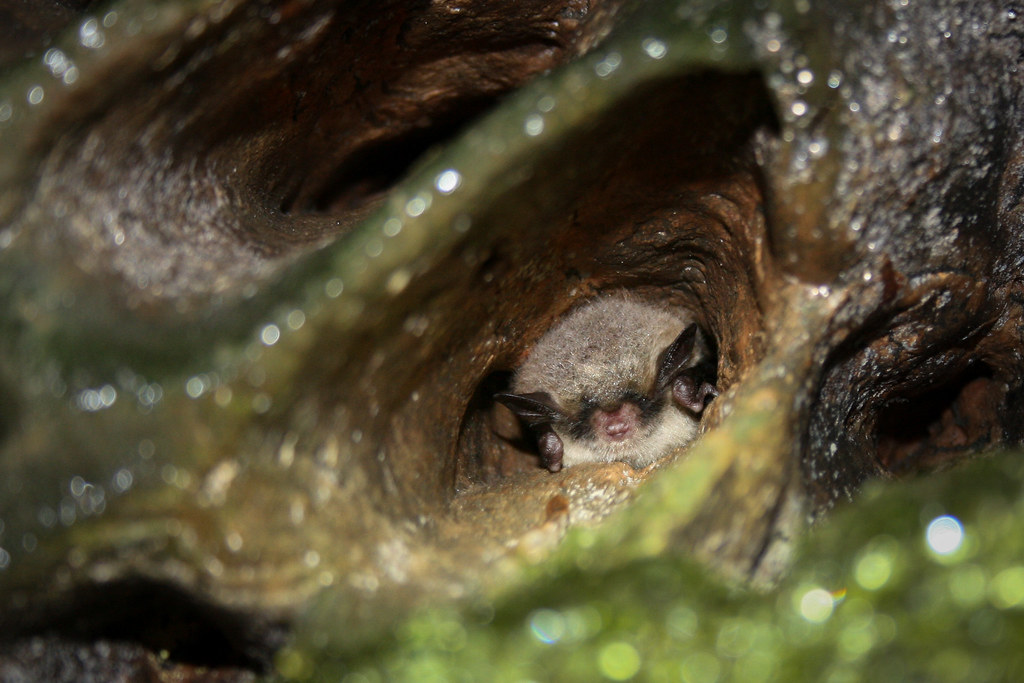Northern Long-Eared Bat
Myotis septentrionalis
Plagued by disease, the northern long-eared bat is an endangered native species. You can identify the mammal by its exceptionally long ears.

Appearance
The northern long-eared bat is a medium-sized bat with a medium to dark brown fur coloring on the back and tawny to pale-brown on the underside. The bat’s ears are particularly long when compared to other bats in the Myotis genus.
Feeding
Northern long-eared bats fly through the understory of forested areas feeding on moths, flies, leafhoppers, caddisflies and beetles. They use echolocation to find prey or find motionless insects on vegetation.
Predators
The biggest threat to northern long-eared bats is the disease white-nose syndrome, which is hurting many bat populations in North America. Habitat destruction and wind turbines also pose a threat to the species
Reproduction and Life Cycle
Breeding begins in late summer or early fall when males begin to gather just before hibernation. Females store sperm during winter hibernation. Come spring, the females emerge from their hibernacula, ovulate and fertilize their eggs using the stored sperm—a process known as “delayed fertilization.”
After fertilization, pregnant bats migrate to warm-weather areas where they roost in small “maternity colonies” and give birth. Most bats within a colony will give birth around the same time, from late May or early June to late July. Young bats start flying by 18 to 21 days after birth, and the maximum lifespan for the northern long-eared bat is up to 18.5 years.
Did You Know?
- During the winter, northern long-eared bats hibernate in caves and mines. These areas are typically cold with high humidity and no air currents. During the summer, they roost underneath bark, in cavities or in crevices of both live trees and snags (dead trees).
- The northern long-eared bat suffers from a devastating disease known as white-nose syndrome that spreads during hibernation.
- The U.S. Fish and Wildlife Service has classified this bat as endangered due to the range-wide impacts of white-nose syndrome
- There is a dedicated White Nose Syndrome Response Team working to curb the disease.
- During the summer, the northern long-eared myotis appears especially reliant upon forested habitats and is found in greater densities in the northern areas than in the south.
Sources and Additional Information
- Northern Long-Eared Bat - U.S. Fish and Wildlife Service
- Northern Long-Eared Bat Fact Sheet - U.S. Fish and Wildlife Service
- Northern Long-Eared Bat - Endangered Species Watch
